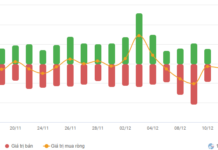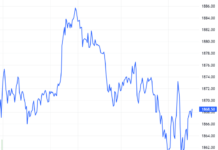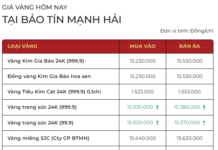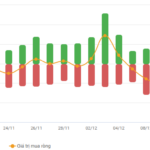The new Social Insurance Law, effective from July 1, 2025, has sparked questions from employees about the difference in pension rates between men and women, who contribute the same 15 years to social insurance (SI).
Mr. Nguyen Van Nam, a worker at Nidec Vietnam Co., Ltd. (in Thu Duc City, Ho Chi Minh City), pointed out that both male and female workers are equally salaried employees who contribute their knowledge and labor to their companies and employers. Therefore, he argued that it is unfair for men to receive a lower pension rate than women, and proposed that the rates be equalized.

Many workers believe that both male and female employees contribute equally to their companies and that it is unfair to have different pension rates.
In response to this query, Mr. Nguyen Duy Cuong, Deputy Director of the Social Insurance Department (under the Ministry of Labor, Invalids, and Social Affairs), stated that the new law inherits the provisions of the 2014 Social Insurance Law, without changing the pension calculation formula. However, the drafting committee has added a method to calculate the pension rate for male workers who have contributed between 15 and 20 years.
“The issue of pension rates has been raised, but after a thorough assessment of the impact and the balance of the retirement and survivor’s fund, it was decided to maintain the current law without modifying the pension rates,” said Mr. Cuong.
For male workers who have reached retirement age and contributed to social insurance for 15 years, their pension rate is set at 40% of the average salary used as the basis for social insurance contributions. This rate is an increase of 6.25% from the initial draft, where the rate for men was calculated at 2.25% per year, resulting in a 33.75% rate for 15 years of contributions.
According to the new law, men who have contributed for 15 years will receive an additional 1% for each additional year, up to the 20th year. From the 20th year onwards, the pension rate is set at 45%, with an additional 2% for each year of contribution, up until the maximum rate of 75% is reached.
On the other hand, female workers who have reached retirement age and contributed to social insurance for 15 years will have a pension rate of 45% of the average salary used as the basis for social insurance contributions. For each additional year, they will also receive an additional 2% until they reach the maximum rate of 75%.
Thus, with 15 years of social insurance contributions, male workers will receive a pension rate of 40%, while female workers will receive 45%.

From the 20th year onwards, both genders will have the same pension rate increase of 2% per year.
From the 20th year onwards, both genders will see an increase of 2% in their pension rates. To receive the maximum pension rate of 75%, female workers need to contribute for 30 years, while male workers need to contribute for 35 years. Those who retire early will have their pension rates reduced by 2% for each year before the official retirement age.
According to the Ministry of Labor, Invalids, and Social Affairs, the average pension rate for each year of social insurance contribution in other countries is around 1.7%. Developed countries like China and South Korea have lower rates of 1%. In Vietnam, the current pension rates for men and women are 2.14% and 2.5%, respectively.






































